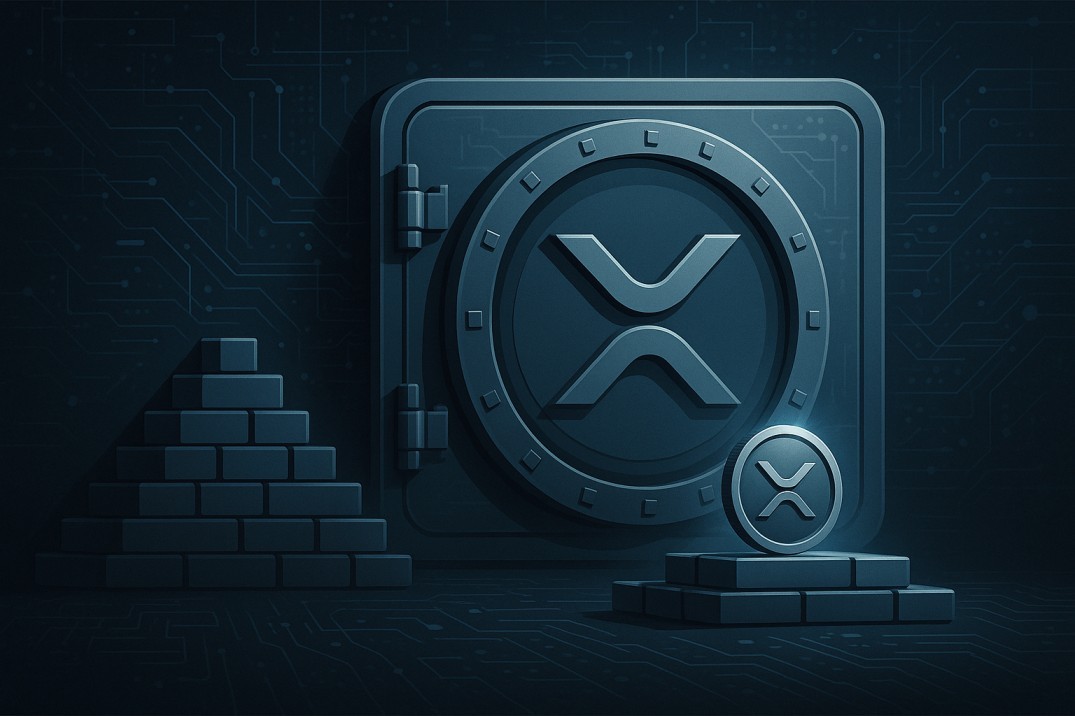TL;DR
- Ripple-backed Evernorth Holdings plans to go public via a SPAC merger with Armada Acquisition Corp II, targeting a Nasdaq listing under the ticker XRPN.
- The firm aims to raise over $1 billion, including $200 million from SBI Holdings, to build a publicly traded XRP treasury.
- Major backers include Ripple, Rippleworks, Pantera Capital, Kraken, GSR, and Ripple co-founder Chris Larsen.
- Proceeds will fund open-market XRP purchases and yield-generating strategies through lending, liquidity provision, and DeFi.
- Ripple CEO Brad Garlinghouse and CTO David Schwartz will act as strategic advisers to the project.
- Evernorth's model could mark a new chapter for institutional adoption of XRP and blockchain-based treasury management.
In a move that could reshape how institutions interact with digital assets, Evernorth Holdings, a Ripple-backed company, has unveiled plans to go public and establish what it calls the largest public XRP treasury. The firm intends to achieve this through a merger with the blank-check company Armada Acquisition Corp II (AACI) - a type of entity used for taking businesses public quickly via what's known as a SPAC (Special Purpose Acquisition Company).
Once finalized, the merged company will retain the Evernorth name and list on Nasdaq under the ticker symbol XRPN, targeting the first quarter of 2026, subject to regulatory and shareholder approvals. The plan was announced in a press release published on PR Newswire on Monday, outlining Evernorth's intention to build a "public vehicle for XRP exposure" while using active strategies to grow holdings over time.
Source: PR Newswire
The Numbers Behind the Vision
According to the release, the transaction aims to raise more than $1 billion in gross proceeds, with $200 million already committed by SBI Holdings, one of Ripple's long-time Japanese partners. Additional backers include Ripple, Rippleworks, Pantera Capital, Kraken, and GSR, along with participation from Chris Larsen, Ripple's co-founder and executive chairman.
The net proceeds from the fundraising will primarily go toward purchasing XRP directly from the open market, establishing what Evernorth calls a publicly traded XRP treasury. The remainder will be used for operational needs and transaction costs.
This approach differs from a traditional exchange-traded fund (ETF) - it's not a passive tracker. Instead, Evernorth intends to take a more active stance by generating yield through lending, providing liquidity, and engaging with decentralized finance (DeFi) opportunities.
Beyond Exposure: A Dynamic Treasury Model

Unlike ETFs or passive investment vehicles, Evernorth is positioning itself as a yield-generating treasury, combining institutional-grade asset management with blockchain-native participation.
Asheesh Birla, Evernorth's CEO and former Ripple General Manager, emphasized that the company's purpose goes beyond mere asset accumulation:
The company plans to deploy XRP into institutional lending, liquidity provisioning, and DeFi strategies, aiming to increase the XRP-per-share value over time. By doing so, Evernorth could become one of the first large-scale experiments in active blockchain treasury management accessible to the public.
The Role of Ripple and Strategic Advisors
Ripple is described in the announcement as a strategic investor, providing both financial backing and advisory support. Ripple CEO Brad Garlinghouse, Chief Legal Officer Stuart Alderoty, and CTO David Schwartz are all listed as strategic advisers to Evernorth.
Garlinghouse expressed strong confidence in the leadership team, noting:
This alignment further strengthens the connection between Evernorth and the broader XRP ecosystem, positioning the initiative as an important bridge between traditional finance and decentralized liquidity markets.
Building on the XRP Ledger
In addition to building an XRP treasury, Evernorth intends to operate validators on the XRP Ledger (XRPL) - the decentralized network that underpins XRP transactions. The firm also plans to leverage Ripple's RLUSD stablecoin as an on-ramp for participation in XRP-based DeFi protocols, providing liquidity and access to tokenized financial products.
Such integrations could expand XRP's role in on-chain finance, extending its use cases beyond payments into areas like capital markets and tokenized asset management.
Why It Matters for XRP and the Market
Evernorth's emergence as a public XRP vehicle comes at a time when the crypto market is seeking mature, regulated paths for digital asset exposure.
If successful, XRPN could:
- Offer investors regulated access to XRP exposure without directly holding tokens.
- Create consistent buy-side demand for XRP on the open market.
- Strengthen XRP's positioning as an institutional-grade asset.
- Demonstrate a real-world model of DeFi-powered corporate treasury growth.
Moreover, this could help reinvigorate XRP's narrative - shifting attention from regulatory battles to constructive capital-market innovation.
The Road Ahead
While the SPAC merger has been approved by both boards, the process still depends on shareholder votes, regulatory clearance, and market conditions. If the deal closes as planned, Evernorth could begin trading as early as Q1 2026, marking one of the most ambitious attempts yet to bring XRP into the mainstream financial system through a publicly traded, yield-driven treasury model.
For now, the announcement alone has reignited optimism among XRP supporters and institutional observers alike - many of whom see Evernorth's initiative as a test case for how blockchain assets can find their footing in the regulated markets of the future. It's a potential blueprint for how digital assets can evolve into structured, revenue-generating treasuries under public scrutiny. If the model succeeds, it could set a new standard for integrating DeFi economics into traditional market frameworks, with XRP once again at the center of that transformation.
ALSO READ: No More Front-Running: Why COTI V2 Might Just Save DeFi











